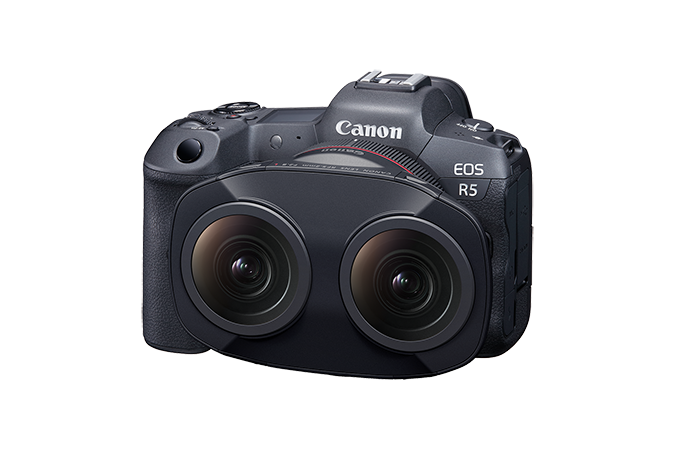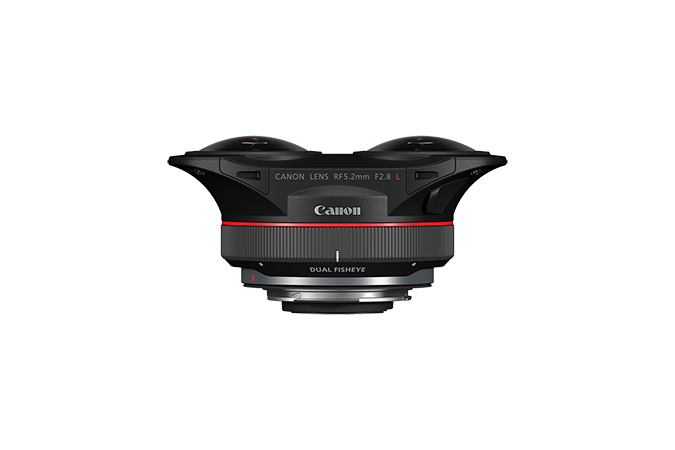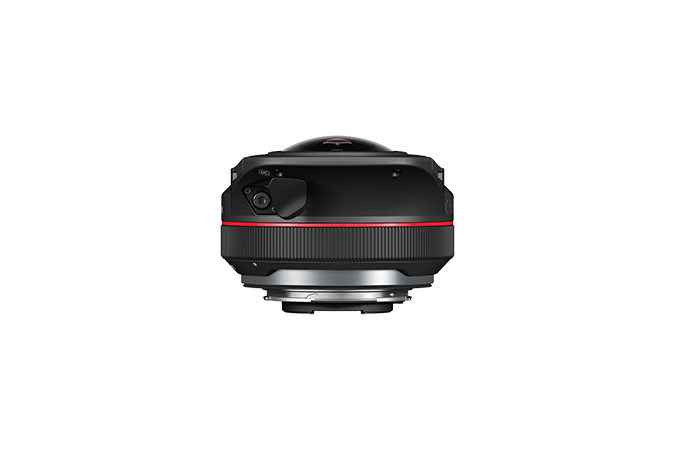Canon surprises everyone with a new $1,999 VR capable fisheye…

Is it incorrect grammar to call it a lens?? Or is it a lenses? Or lens-lens?
I don’t know what you call it but Canon put some of their nice optical technology in this one like their Sub Wavelength Coating (SWC) which is designed to reduce flare and increase image contrast when shooting directly into bright light.
The lenses captures a 180 degree stereoscopic image, that is, it captures two images at slightly different perspectives, very much like how your own eyeballs work. This produces a natural offset which when viewed through VR goggles gives you the impression of actually being there. Pretty cool!
The downside is you really need a VR headset to fully experience what this product does. Yes, you can view 3D on a flat screen but then you need a special screen and special glasses, and it’s not really VR anymore.

On first glance I found it tempting to dismiss this lens as something nobody who is serious about photo or video will use on anything resembling a frequent basis, but there are definitely some use cases for it such as providing a way for people at events to get a “front row” seat to the action, whatever it might be.
Just thinking off the top of my head but there could be a “VR” section at a big rock concert. Sure there’s front row seating, but how about VR seating? Could be cool.
Of course there is the investment that has to be made in the VR headset and some way of streaming the output but it could be worth it for major events.
I’m sure there are more things that can be thought up as well.

A few of the official specifications are below:
| Focal Lengths | 2×5.2mm |
| Maximum and Minimum Aperture | f/2.8 – f/16 (1/3 stops, 1/2 stops) |
| Lens Mount Type | Canon RF Mount; Metal Mount |
| Dual Pixel CMOS AF | Not Supported — Manual focus only |
No Autofocus
As you can see, the lens is not an AF lens, but that hardly matters with it being a 5.2mm focal length! Even opened up to the widest aperture the hyperfocal distance will be somewhere around 1-2 feet.
Basically unless something is right up on the lens you’re not going to need to adjust focus. And if you do need to adjust focus the lens does work with the R5’s focus assist which gives you an idea what direction and how far to turn the focus ring.
Canon Software
One of the most interesting things here is that Canon is providing software to process the unique video files produced by this lens. So if you’re worried about working with the output in your favorite video editing software it appears that won’t generally be an issue.
At launch they’re also providing a plugin for Premier Pro to handle the output from the R5 with this lens attached.
An unexpected but interesting addition to the RF lineup. I’m sure people will find fun things to do with it!
Check it out in the official Canon video below:

